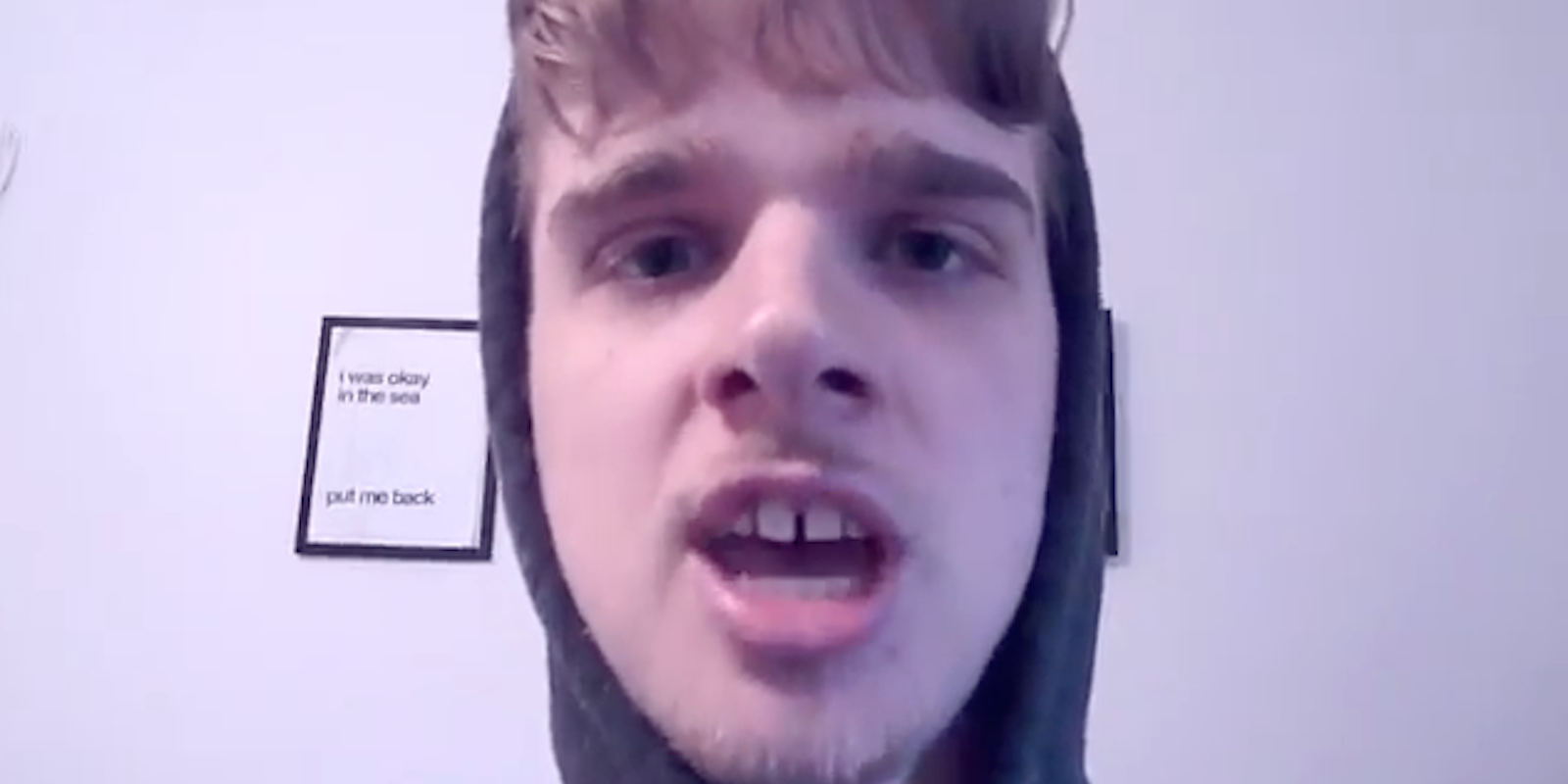Have you heard dubstep? Read the #imagine tag on Twitter? Seen the Tumblr of a person under the age of 15? Each week in YOLO, Lindsey Weber picks a new teen trend she doesn’t quite understand and attempts to unpack it before your very eyes.
I am not the first to notice Steve Roggenbuck, and I certainly will not be the last. The 24-year-old writer and vlogger is exploring #YOLO in ways that inspire teens (and 26 year-olds like myself) across the Web.
Roggenbuck calls himself a “poet/blogger” on his site bio. But the dichotomy of his artistic existence shines most clearly in the two major outlets he chooses to use as examples of press coverage: niche Internet cataloguers Know Your Meme and old-school print giant New York Times Style magazine. Know Your Meme literally has him catalogued as a meme—archiving his videos monologues, ebook Crunk Juice, and “Notable Image Macros.”
I was first introduced to Roggenbuck via a video called “hashtag yolo.mov (FULL EXPLANATION OF THE “YOLO” LIEFSTYLE),” a flurry of “selfie angles” that cast Roggenbuck and his friends as a wild crew of youngs who make seemingly endless profound statements to each other. Over a Sigur Ros track with infused clips of professional speaker Gary Vaynerchuk and rapper Lil’ B, the video stands out in sea of YOLO parodies. That’s because it isn’t one.
“All of mortality. All the carpe poems of history. All of romanticism. Is in one hashtag,” Roggenbuck says in a way that is seemingly earnest.
“It’s not a fucking meme, Dad; it’s a lifestyle.”
If you giggled and simultaneously thought it’s actually kind of genius, that’s quintessential Roggenbuck.
His views on poetry are equally inspiring for fellow Web-natives. In a video called “Internet Poetry Manifesto: How social media will spawn a major revitalization in poetry” (future Ted Talk title, anyone? ANYONE?), Roggenbuck rambles about the “streams of content” that populate the Web and how they are modern-day poetry.
“It’s often said that no one cares about poetry, but every day millions of people are looking for CONTENT online…with the freedom of form that poetry has exhibited throughout history, there’s no reason why poetry can’t thrive in this kind of environment.”
—Steve Roggenbuck
With Roggenbuck’s words exhibited across image macros, shouted at webcams and written in ebooks, he obviously knows how to effectively manipulate his poetry to be read and reblogged. What if Walt Whitman had Twitter and knew how to use it?
Roggenbuck joins other poets playing within specific digital boundaries, like Patricia Lockwood, whose series of 140-character sexts have made her a beloved figure on Twitter.
“I have no problem thinking of tweets as poetry, because the really great ones function in the same way that poetry does to me. They are clear and cubic thinking, and they repay obsessive thinking-about.”
—Patricia Lockwood
If anything, Roggenbuck proves that it’s not always just what you say—it’s also where you say it. I don’t know if we’ll be flipping through Roggenbuck’s image macros coffee table book (ebook?) in five years, but I do know he gets #YOLO better than this columnist ever could.
Screengrab via YouTube


